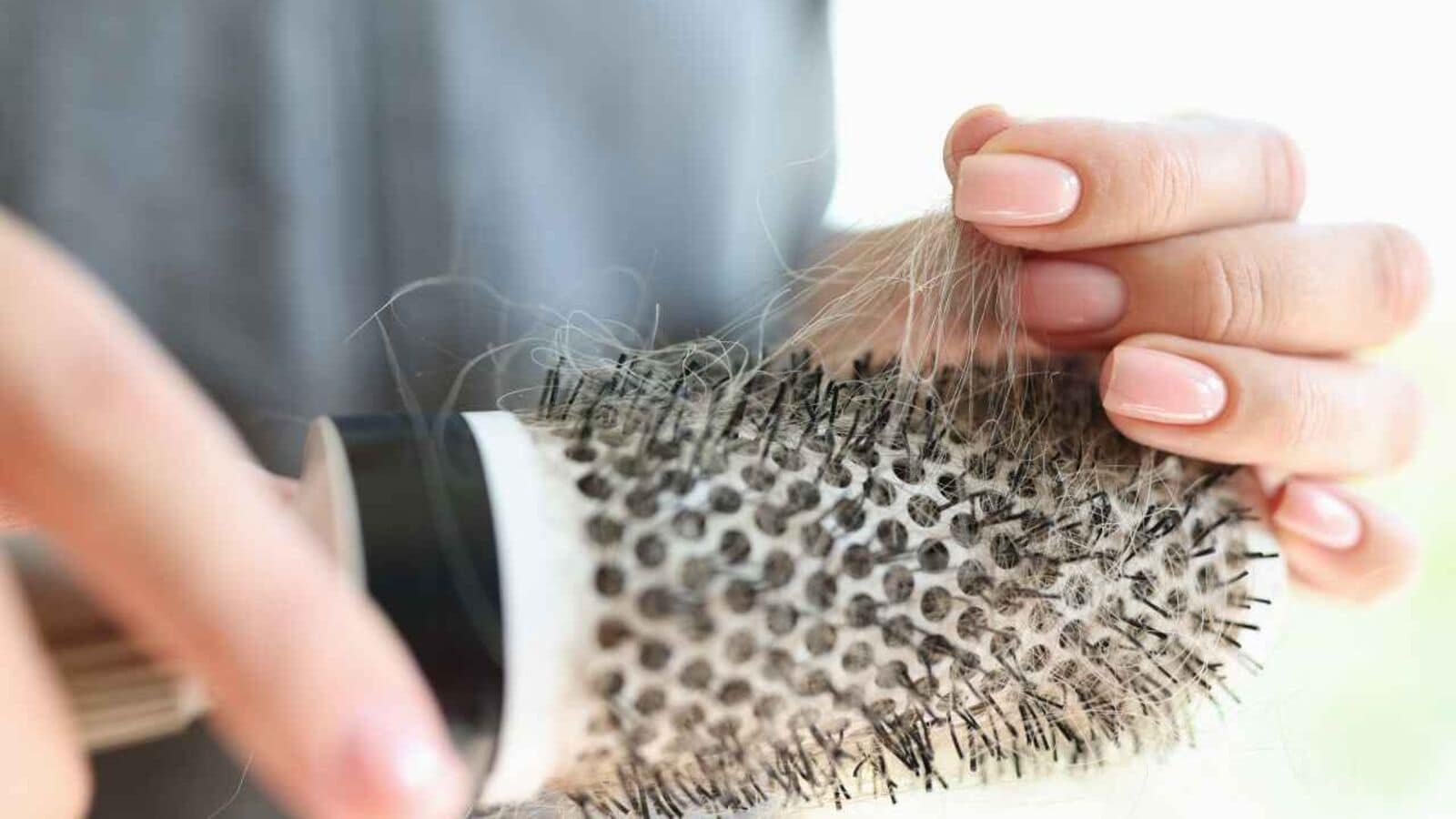Hair loss isn’t just a man’s problem. Four ways to treat female baldness.

When balls of her hair started falling in the shower, it eroded her self-confidence. She ended up getting divorced, though hair loss wasn’t the primary reason. “It didn’t help to not feel good about myself,” says Cornman, now 42 years old.
Fifty-five percent of women deal with hair loss by the age of 70, dermatologists at Rutgers New Jersey Medical School and Marconi University found. The most common condition is female-pattern hair loss, which is genetic, affecting 30 million women in the U.S. By comparison, more than 80% of men experience hair loss and 50 million men have male-pattern hair loss, found NYU Langone Health and the National Institutes of Health, respectively.
“I see more women with concerns about hair loss than men,” says Dr. Christina Weng, dermatologist at Massachusetts General Hospital and chief medical officer at Pelage Pharmaceuticals.
She says treatment options can be divided into four categories: medicine, therapy, nutritional supplements, and lifestyle changes. “The best treatment is the one they are going to stick with, because they aren’t overnight fixes, and they won’t see results for at least six months.”
What does the female-pattern hair loss look like? It usually shows up as the widening of the part line at the top of the head, and thinning all over the scalp, explains Dr. Weng. The silver lining: The hair line at the front of the scalp usually stays the same for women, contrary to men with receding hair lines.
Here are the treatment options:
Medicine
The most commonly prescribed drug is Minoxidil, the only FDA-approved treatment for hair loss. Dr. Weng says it works better for people who can convert an enzyme in the hair follicle to its active form—overall, only 30% of people respond to it.
Another medicine is Spironolactone, which helps block the testosterone derivate DHT that contributes to genetic hair loss. It is especially effective if women have genetic hair loss coupled with hormonal issues or polycystic ovarian syndrome, Dr. Weng says, though it can cause lightheadedness.
These drugs usually aren’t covered by insurance.
Therapy
New hair loss therapies for women have come forward in the last decade. Some stimulate hair follicles with targeted laser light; others inject clients with platelet-rich plasma or stems cells to try to get hair to grow. Some of these treatments cost thousands of dollar, and most times aren’t covered by insurance.
You should get a blood test before trying any of them, Cornman’s trichologist, William Gaunitz of Laguna Beach, Calif. says. (Trichologists specialize in treating diseases of the hair and scalp.) If women are deficient in iron or zinc, then trying to activate the building blocks for healthy hair growth can cause the follicles to become overstimulated and even lead to profuse shedding, he says.
Nutritional Supplements
Gaunitz says poor nutrition is a big factor in the 100,000-plus women he has treated. “Women are more susceptible to accelerating genetic hair loss, because of fad diets,” he says. Vitamin D3 deficiency is by far the largest cause, followed by deficiencies in Ferritin, which stores iron, and then in vitamin B12.
Women going through menopause have the toughest hand dealt to them. Estrogen levels drop sharply, which means the body’s natural hair protection hormone is close to off duty, Gaunitz explains. They may need to take nutritional supplements for vitamins D3 or B12, he says.
One of the biggest misconceptions out there: Biotin supplements will give women beautiful locks. Not true, says Dr. Carolyn Goh, dermatologist and director of the Hair and Scalp Disorders Clinic at UCLA Health. Unless you are deficient in this vitamin, taking supplements won’t help.
Lifestyle Changes
Stress is another contributor to female baldness. Lack of sleep affects the adrenal and thyroid glands, compounding the problem. Gaunitz tells his clients to avoid stress and sleep seven to eight hours a night.
To find out the root cause of hair loss, hair loss tests can help. The Mayo Clinic suggests a scalp biopsy in which a doctor collects samples and examines them under a microscope, a light microscopy in which a doctor examines hairs on the head with a special instrument, or a blood test which uncovers medical reasons for hair loss.
Women can also do a simple hair pull test at home. Gaunitz tells how to do it. Throughout the head, grip the hairs with your fingers and gently pull them back through the fingers. Do it twice. If you are left with four or more hairs in your hands on the first pull, it signifies “something to think about;” if you get three or more hairs on the second pull, it’s a more pressing problem.
Cornman, the former dancer, took supplements to counter her low vitamin D3 level, added natural DHT blockers to the mix, and refreshed her hair care routine. She now has a full head of curly strawberry-blonde hair.







